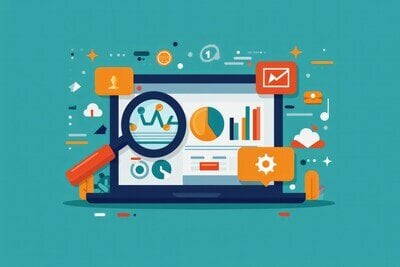Asteri’s Strategic Toolkit for Bridging the AI Skills Gap in Today's Workforce
What must enterprises do to prepare their teams for battle as AI assumes a more prominent place within their workforce? Employers must ensure that humans are doing their part to help AI succeed without sacrificing their own place in their organization's hierarchy. Asteri, a leader in AI workforce solutions, is helping businesses address and mitigate the potential of AI-induced job displacements by closing the gap and arming employees with the appropriate battle skills needed to maintain control. With the most advanced AI skills engine, Asteri delivers precise, unbiased data on workforce skills, enabling companies to make strategic decisions on upskilling, reskilling, and internal talent allocation.
(Palo Alto, CA) August 13, 2024 — 82% of companies are either exploring or already using artificial intelligence (AI) in their business operations, with larger enterprises twice as likely to use this technology than smaller businesses. (1) However, as the synergy between humans and AI becomes essential for the future of the workforce, many companies are struggling to find the right talent to deploy these new tools effectively. This challenge has created an urgent need to close the skills gap between employees and the successful execution of AI strategies. “To overcome this challenge, there needs to be a partnership between the employer and employees using the right analytical tools to identify and build upon existing skills”, states Julia Grace Samoylenko, Founder and CEO of Asteri. “Businesses don't always understand what they already have in terms of talent. And what they often lack the most is the intelligence to make decisions related to workforce planning and the future”.
87% of businesses believe AI will help grow revenue, boost operational efficiency, automate, and augment jobs, driving significant labor gains and efficiency improvements. (2) The bad news, according to a report by Goldman Sachs, is that AI could replace 300 million full-time jobs by 2030. Another study by the McKinsey Global Institute reports that 14% of employees will need to change their careers because of digitization, robotics, and AI advancements. (3)
There needs to be an integration of human resourcefulness with AI's precision and efficiency. AI is great for managing and thinking through information that's already known and collected. Taking advantage of human judgment, decision-making, and creativity is where humans still have an edge. If reskilled properly, employees who are under threat of being replaced by AI could be of great value to their employer in more logistical areas of their organization.
Navigating AI Disruption
Greg Von der Ahe, Head of Product and Go-To-Market for Asteri, explains, “There is talent supply and demand to consider. The decision-making process for acquiring new talent is to build it, buy it, or rent it. The price goes up as the supply goes down”.
“It's an expensive proposition. Building the necessary talent through upskilling can be a better option. However, upskilling without direction is not helpful”, Von der Ahe highlights.
Evgeny Razinkov, Chief AI Officer at Asteri, points out that often most workers are willing to update their skills but fail at doing so strategically. “The overwhelming majority of the learning and development programs that exist now were created in an era when nobody anticipated the scope of AI's ability to upset the workforce's apple cart. Many online courses and learning platforms contain material created before 2022, not designed with AI's exponential potential in mind,” he points out.
At the same time, most businesses lack sufficient education about AI, and there are a lot of assumptions about how they will build their strategy that could derail their efforts. Razinkov explains, “To control something, you need to be able to measure it. To make informed decisions, companies must identify what skills are essential to the organization, establish what skills employees already have, and where they have skill gaps. Asteri’s approach to this issue is a creation of a knowledge graph that collects information about what skills are required right now in each industry and how these skills relate to certain positions – and then running skill inference by grounding AI models using this knowledge graph”.
Asteri's AI-Powered Skills Inference Revolutionizes Workforce Planning
The faster something changes, the more skills you need to track. This acceleration is something that can only be handled by AI. Companies need a real-time skills interface to keep up with the constantly changing variables of AI in the workplace.
Asteri's AI engine analyzes trends in the job market to identify which skill sets are becoming more prominent, which are losing relevance, and which skills are obsolete. Asteri also provides strategic workforce planning so companies can steer their workforce into upskilling in certain areas in the direction the company needs to go.
Samoylenko emphasizes the competitive aspect behind this revolution, “Enterprise leaders must be proactive. They must start now and recognize the urgency of this preemptive strike. If a company moves too slowly, it will lose its market share to businesses keeping up with AI's coming of age”. “Asteri seamlessly integrates with your existing tools, enriching your workforce ecosystem with comprehensive skills data that adapts to your operational framework, providing frictionless experience.”
About Asteri:
In an era of rapid technological change and evolving job markets, Julia Grace Samoylenko launched Asteri from Palo Alto, California—a technology startup dedicated to managing the ever-evolving skill sets within enterprise workforces. With over a decade of Fortune 500 experience, she leads Asteri in harnessing AI to analyze digital traces of employee work and transform them into evidence-based workforce skills data. Asteri's AI engine, trained on hundreds of thousands of skill-related records, enhances the accuracy of skill extraction, inference, and prediction. Additionally, the team supports companies in enhancing their AI-related skills by bringing visibility into which jobs and skills will be replaced by AI—a critical concern for all enterprise leaders. This innovative method not only anticipates the needs of tomorrow's workforce—echoing the World Economic Forum's call for reskilling half the global workforce by 2025—but also positions Asteri as a leader in the skills-centric talent revolution. Learn more about how they are pioneering the skills-centric talent revolution at https://asteri.ai.
References:
- Cardillo, Anthony. "How Many Companies Use AI? (New Data)." Exploding Topics, Exploding Topics, 23 July 2024, explodingtopics.com/blog/companies-using-ai.
- Tucci, Linda. "A Guide to Artificial Intelligence in the Enterprise." Enterprise AI, TechTarget, 25 Jan. 2024, techtarget.com/searchenterpriseai/Ultimate-guide-to-artificial-intelligence-in-the-enterprise.
- Talmage-Rostron, Mark. Nexford University, 27 June 2024, nexford.edu/insights/how-will-ai-affect-jobs.
###
Media Inquiries:
Karla Jo Helms
JOTO PR™
727-777-4629
You May Also Like
These Related Stories

Asteri's Approach to AI Job Displacement: Taking Control of the Workforce Skills

Surviving Google's Algorithm Overhaul: The Unique Advantage of Anti-PR Strategies


No Comments Yet
Let us know what you think